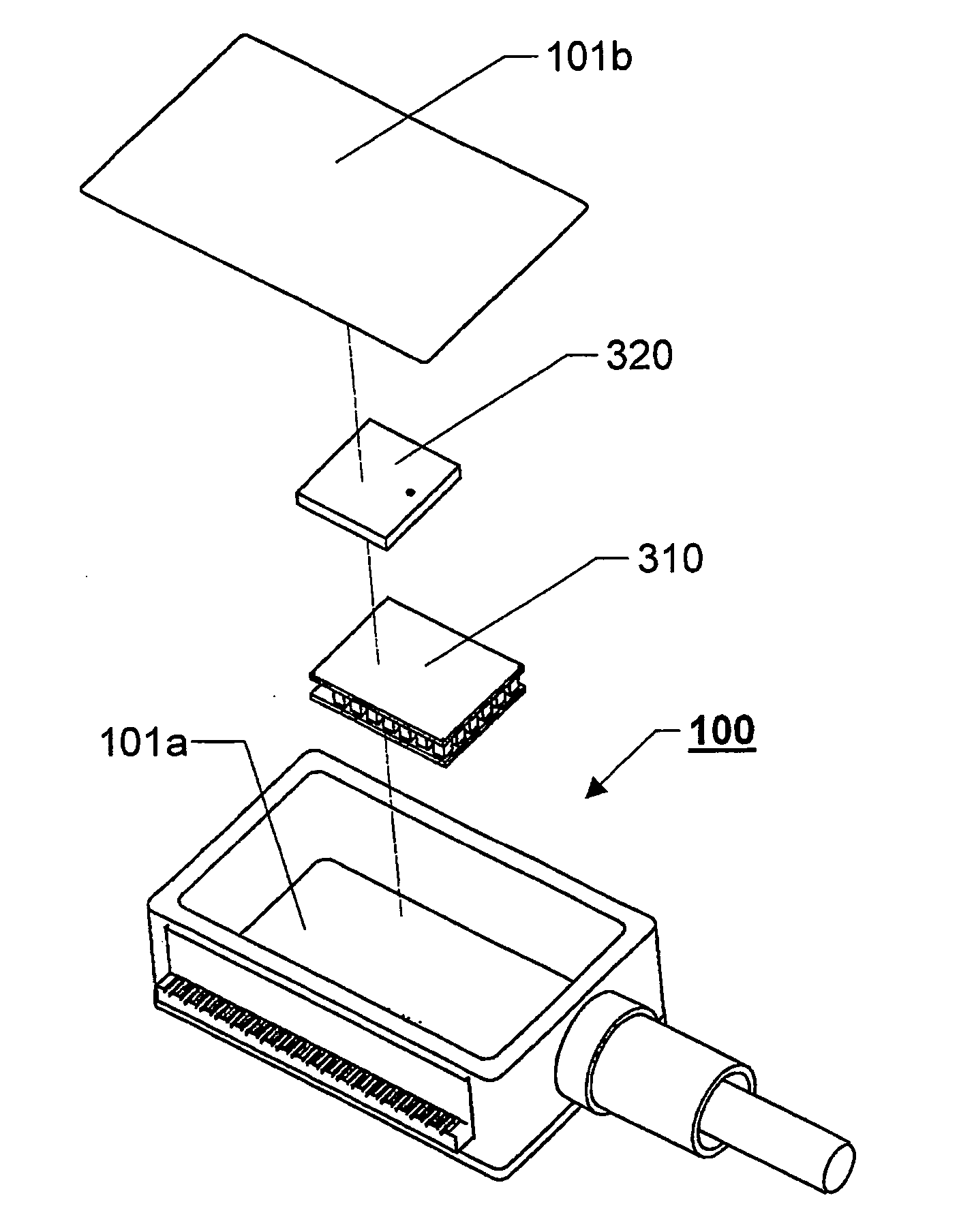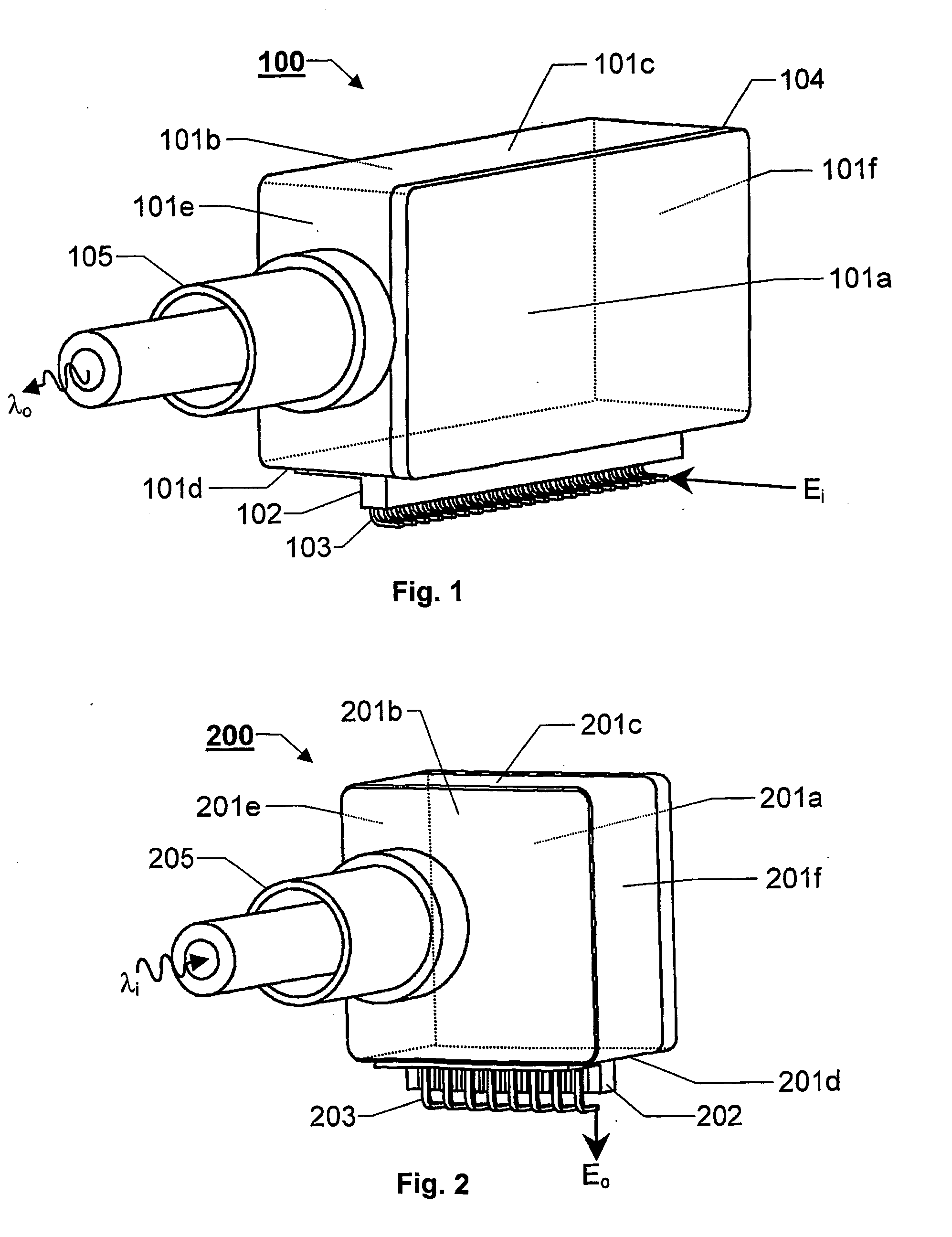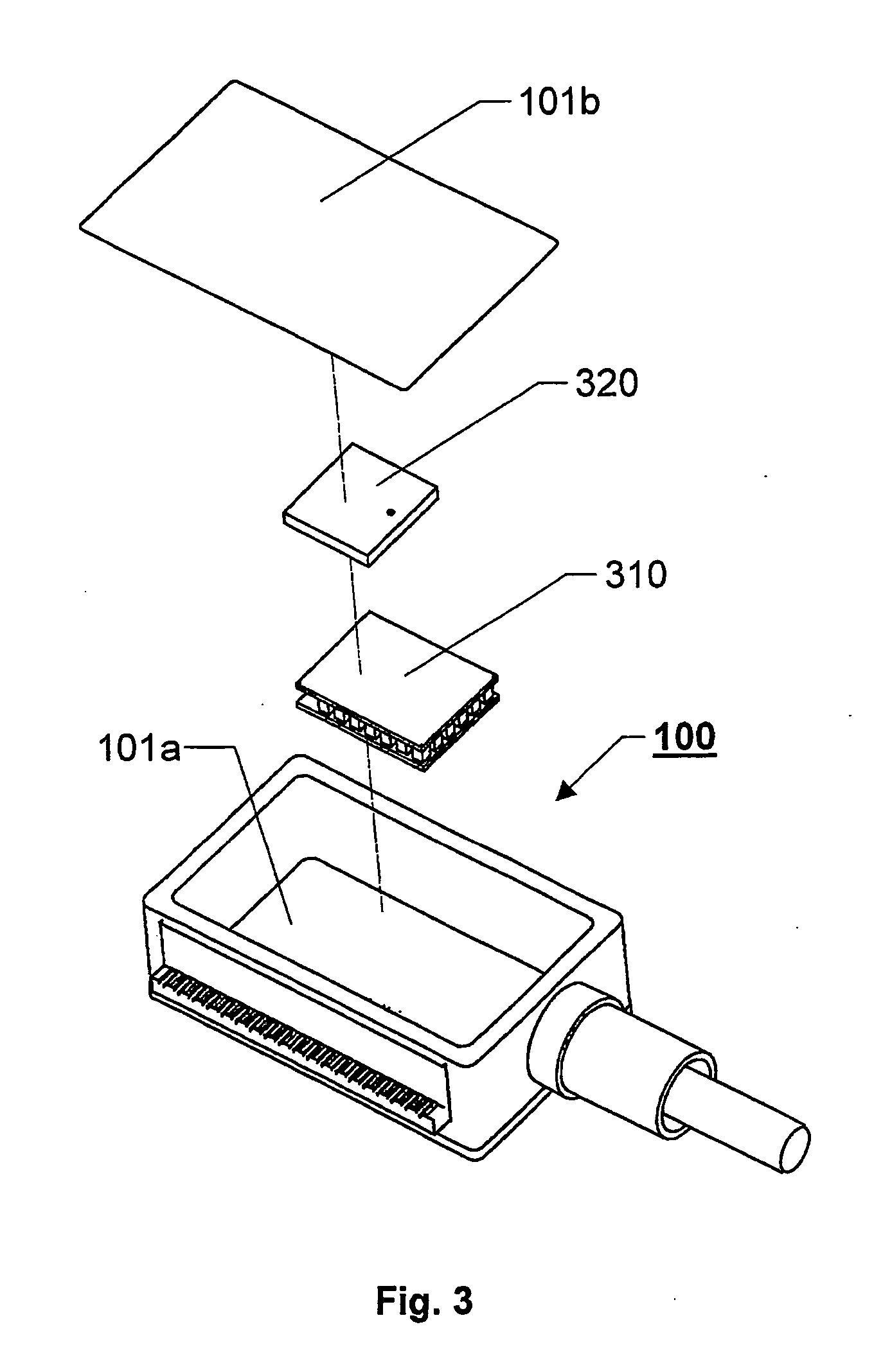Heat controlled optoelectrical unit
a technology of optoelectric units and heat control, which is applied in the direction of thermoelectric devices, semiconductor lasers, instruments, etc., can solve the problems of non-trivial optimization problems, increased heat power loss with increasing processing speed/bitrate, and relatively large power loss of laser modules in particular
- Summary
- Abstract
- Description
- Claims
- Application Information
AI Technical Summary
Benefits of technology
Problems solved by technology
Method used
Image
Examples
Embodiment Construction
[0031] Conventionally, the optoelectrical units (such as lasers and photodetectors) in optoelectrical transceivers have been oriented with their largest side in parallel with the circuit board on which they are mounted. A largest possible interface area has thereby been accomplished towards at least one heat sink being placed either below, above or both below and above the circuit board. This design, however, results in a relatively large footprint for each optoelectrical unit, which in turn consumes valuable circuit board area that could have been used by other units. Therefore, the present invention proposes that the optoelectrical units instead be placed on their edges, i.e. with a capsule side having a comparatively small area towards the circuit board. FIG. 1 shows a first example of this strategy, where a capsule 100 containing a laser unit stands on one of its relatively small area sides 101d. The laser capsule 100 is presumed to have the general shape of a rectangular parall...
PUM
 Login to View More
Login to View More Abstract
Description
Claims
Application Information
 Login to View More
Login to View More - R&D
- Intellectual Property
- Life Sciences
- Materials
- Tech Scout
- Unparalleled Data Quality
- Higher Quality Content
- 60% Fewer Hallucinations
Browse by: Latest US Patents, China's latest patents, Technical Efficacy Thesaurus, Application Domain, Technology Topic, Popular Technical Reports.
© 2025 PatSnap. All rights reserved.Legal|Privacy policy|Modern Slavery Act Transparency Statement|Sitemap|About US| Contact US: help@patsnap.com



